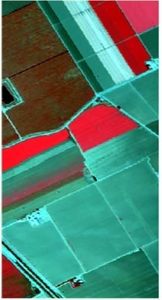SpectralNET: Exploring Spatial-Spectral WaveletCNN for Hyperspectral Image Classification
Hyperspectral Image (HSI) classification using Convolutional Neural Networks (CNN) is widely found in the current literature. Approaches vary from using SVMs to 2D CNNs, 3D CNNs, 3D-2D CNNs. Besides 3D-2D CNNs and FuSENet, the other approaches do not consider both the spectral and spatial features together for HSI classification task, thereby resulting in poor performances. 3D CNNs are computationally heavy and are not widely used, while 2D CNNs do not consider multi-resolution processing of images, and only limits itself to the spatial features. Even though 3D-2D CNNs try to model the spectral and spatial features their performance seems limited when applied over multiple dataset. In this article, we propose SpectralNET, a wavelet CNN, which is a variation of 2D CNN for multi-resolution HSI classification. A wavelet CNN uses layers of wavelet transform to bring out spectral features. Computing a wavelet transform is lighter than computing 3D CNN. The spectral features extracted are then connected to the 2D CNN which bring out the spatial features, thereby creating a spatial-spectral feature vector for classification. Overall a better model is achieved that can classify multi-resolution HSI data with high accuracy. Experiments performed with SpectralNET on benchmark dataset, i.e. Indian Pines, University of Pavia, and Salinas Scenes confirm the superiority of proposed SpectralNET with respect to the state-of-the-art methods. The code is publicly available in https://github.com/tanmay-ty/SpectralNET.
PDF Abstract







 Indian Pines
Indian Pines
 Pavia University
Pavia University
 Salinas
Salinas
